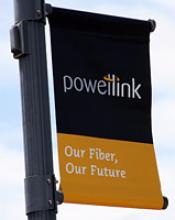New Hampshire law makes it more difficult for communities to build broadband networks by only allowing bonds to finance broadband networks in "areas not served by an existing broadband carrier or provider." (See
Title III, Chapter 33 of NH law.)
Such a requirement means that local governments could only build networks in areas with absolutely no service providers. Seeing as how most communities have at least one pocket with access to the Internet one way or another, communities are prevented from bonding for the essential infrastructure they need.
The only areas totally without a single service provider could probably only be served by a network that
also serves an area where some service providers already operate, as those are the areas capable of generating enough revenue to balance rural areas with less revenue potential.
Because this law significantly retards the ability of communities to encourage economic development, we have seen previous attempts to update it (one of which we
covered last year). This year,
HB 389 offered a compromise to existing service providers. Nonetheless, it was also killed.
HB 389 would have allowed local governments to bond for broadband infrastructure but not allowed municipalities to provide retail services. Communities would be able to build open access networks but not allowed to offer services directly to subscribers.
Though we ardently defend the right of communities to build the networks they need using the business model they choose, this bill would have been an improvement for communities in New Hampshire.











